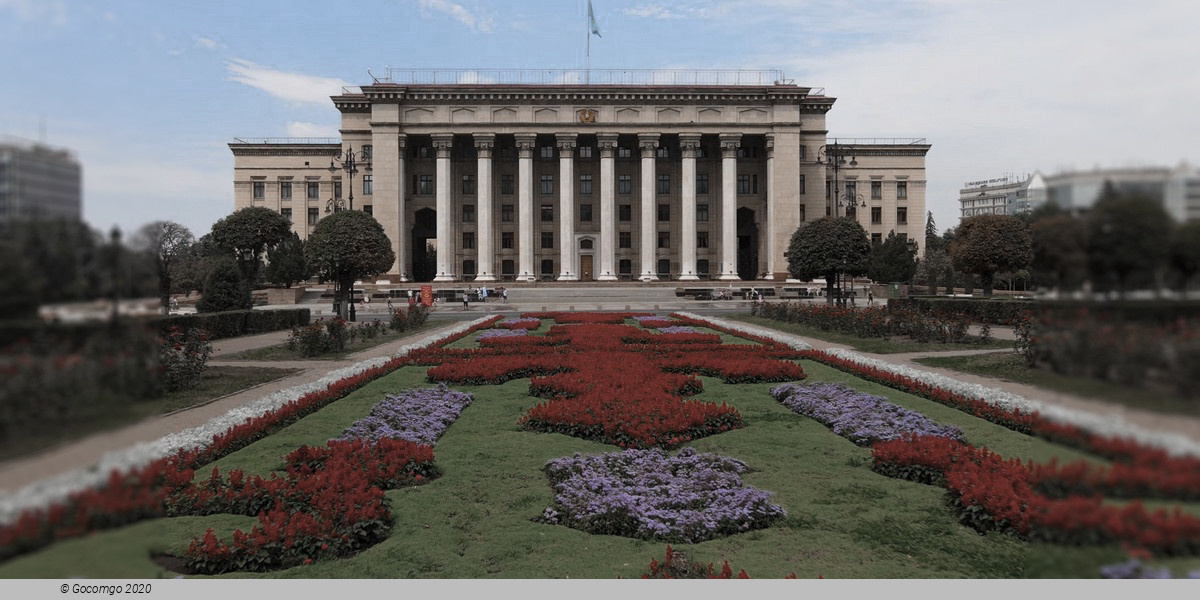Almaty

Almaty is the largest city in Kazakhstan, it was the capital of Kazakhstan from 1929 to 1997. Almaty is still the major commercial and cultural centre of Kazakhstan, as well as its most populous and most cosmopolitan city.
Almaty is largely considered to be the heart and soul of Kazakhstan's classical and popular cultures. The Almaty Region and the city itself have a distinct vibe and pace compared to other regions and cities in Kazakhstan. Contemporary Almaty has a more European vibe due to more cafes and restaurants with outdoor seating and public green space. Kazakh culture and zeitgeist identify as the genetic origin, or fatherland, of the wild apple Malus siversii. Almaty is the historical and contemporary capital of intellectualism in Kazakhstan as a result of Almaty's location along the Ancient Silk Road and that many Russian intellectuals were exiled to the region and to Karlag. The Abai Kazakh State Opera and Ballet Theatre has anchored the city's theater scene since 1934 and was founded around a community of local performance artists. The Kasteyev State Museum of Arts was founded in 1935, is the largest museum in Kazakhstan, and has the largest collection of artworks by Kazakh classic and contemporary artists.
The flowering of theatrical art in the city began during the Soviet period of Alma-Ata, resulting from the transfer of the capital of the Kazakh Soviet Socialist Republic from Kyzylorda to Alma-Ata. Thus, the Kazakh Drama Theater, the first Kazakh professional theater, moved to the city. In the 1930s, the Opera and Ballet Theater (1934) and the Puppet Theater (1935) were established in the city. Also, theater companies founded in different cities of the republic began to move to the capital: the Russian Drama Theater (moved from Semipalatinsk in 1934), the Uyghur Musical Comedy Theater (from Chilik, 1962), the Korean Musical Comedy Theater (from Kyzylorda, 1968), and the German Drama Theater (from Temirtau, 1989).
After Kazakhstan regained independence in 1991, a large number of new independent theaters appeared in the city
A significant contribution to the study of the history of culture, ethnography of southern Kazakhs in the late 19th–20th centuries was made by Turkestan scientists and local historians, united around the scientific societies and cultural and educational institutions of Tashkent. In 1874, from the private collections of travelers who visited Semirechye with a scientific and regional purpose and with the help of the local intelligentsia, a museum was first created in the city of Verny, which was later transformed into a village museum of the Semirechye Cossack Host. This date is the day of the foundation of the first museum in Semirechye. The foundation of the A. Kasteev Museum of Arts was laid by the Kazakh State Art Gallery named after T.G. Shevchenko, founded in 1935. Its main tasks were to collect the best works of Kazakh artists and organize their creative business trips. In 1936, museums in Moscow and Leningrad (now St. Petersburg) donated a significant number of paintings, graphics, sculpture and applied art to the gallery. By the end of the 1950s, the gallery's funds numbered over 5,000 exhibits, including paintings, reproductions of works by pre-revolutionary and Soviet artists, Western European and Eastern masters of art. In the 1970s and 1980s, new buildings were built for existing museums, and new thematic museums were opened: books, musical instruments, archeology, and others. A significant contribution to the development of the museum business was the opening of the Museum of the History of Almaty, which created an association of museums in the city of Almaty and the state institution "Gylym Ordasy", which united 4 museums.

